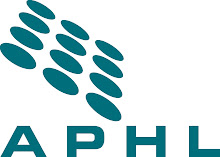A virus that causes about 20% of hearing losses in newborns has received considerable attention of late in mainstream media. A recent study published in the Journal of the American Medical Association (JAMA), finds that this virus—the cytomegalovirus or “CMV”—can be best detected using existing analytical methods, rather than the one evaluated in the study. [insert reference as footnote], For the immediate future, medical practitioners, laboratory scientists and the families they serve will need to rely on other proven technologies, such as testing a baby’s saliva.
Newborn screening is a complex process that can be confusing even to medical experts. Recently a CBS News segment on the JAMA study reported erroneously that newborn hearing tests are conducted at state public health laboratories. This is incorrect. A baby’s hearing is tested at the hospital within 24-48 hours of birth; that test is not performed by state newborn screening laboratories.
State laboratories do, however, shoulder most of the responsibility for newborn screening in the US. They conduct 97% of the testing for the core panel of 29 congenital disorders recommended by the American College of Medical Genetics (ACMG) and the U.S. Secretary of Health and Human Services Advisory Committee on Heritable Disorders and Genetic Diseases in Newborns and children (ACHDGDNC). Newborn screening by state laboratories protects over 4,000 children a year from the potentially devastating effects of Phenylketonuria (PKU), Medium Chain Acyl-CoA Dehydrogenase deficiency (MCAD), Maple Syrup Urine Disease (MSUD) and other serious disorders that can lead to death or life-long disability. In addition to the 29 ACMG “Core” conditions, the public health laboratory in some states also screens for some of the 25 “Secondary” conditions.
A new testing method would simplify and expedite testing for CMV if the method could be adapted to use the same instrument platforms as used to detect other newborn screening conditions.
Newborn screening starts with a single heel-prick collected at the birthing facility soon after a baby is born. Blood droplets are collected on a filter paper kit, allowed to dry and then sent to the state public health laboratory for testing using specific analytical tools to detect congenital disorders. Methods used by the newborn screening laboratory include fluorometric and colorimetric immunoassays, electrophoresis, high performance liquid chromotography and tandem mass spectrometry (MS/MS).
The introduction of MS/MS revolutionized newborn screening – allowing labs to test for dozens of conditions simultaneously. Currently, not all diseases and conditions can be detected via MS/MS (e.g. biotinidase, galactosemia) but the aim is to detect more disorders using this efficient and effective method to provide more rapid detection of congenital conditions to protect the nation’s children.
Friday, April 16, 2010
Subscribe to:
Post Comments (Atom)





No comments:
Post a Comment